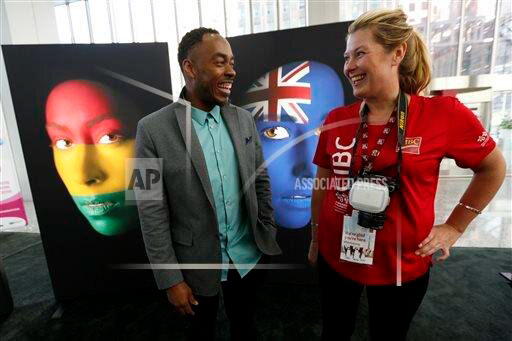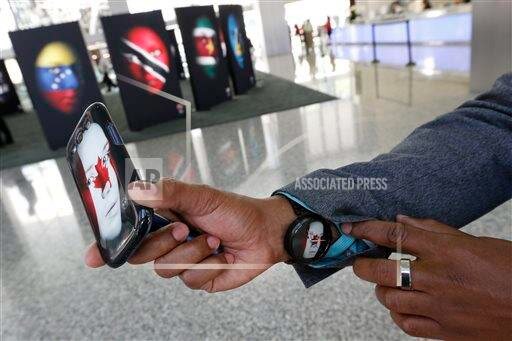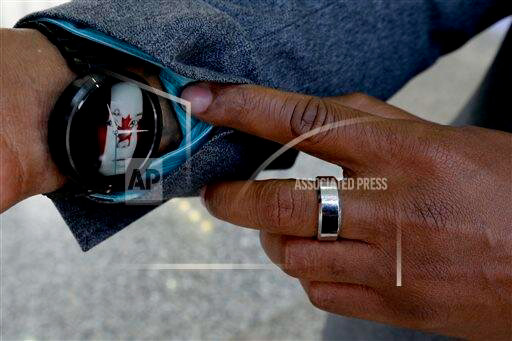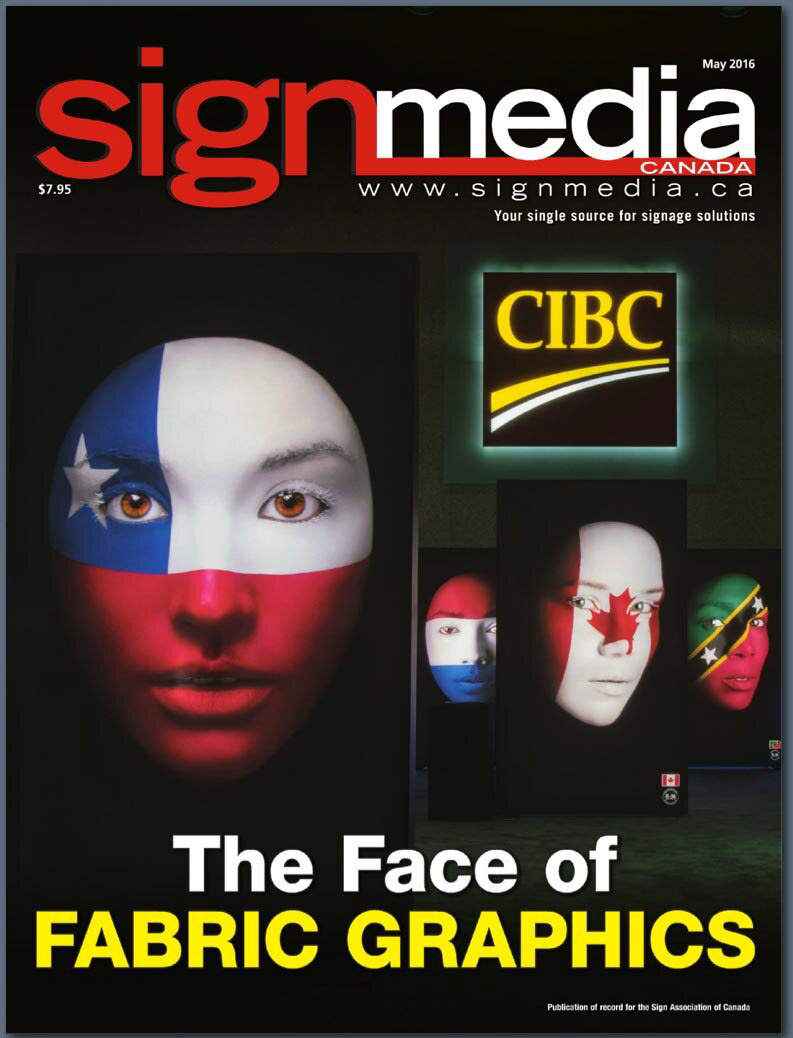
Sign Media Canada | Print Media
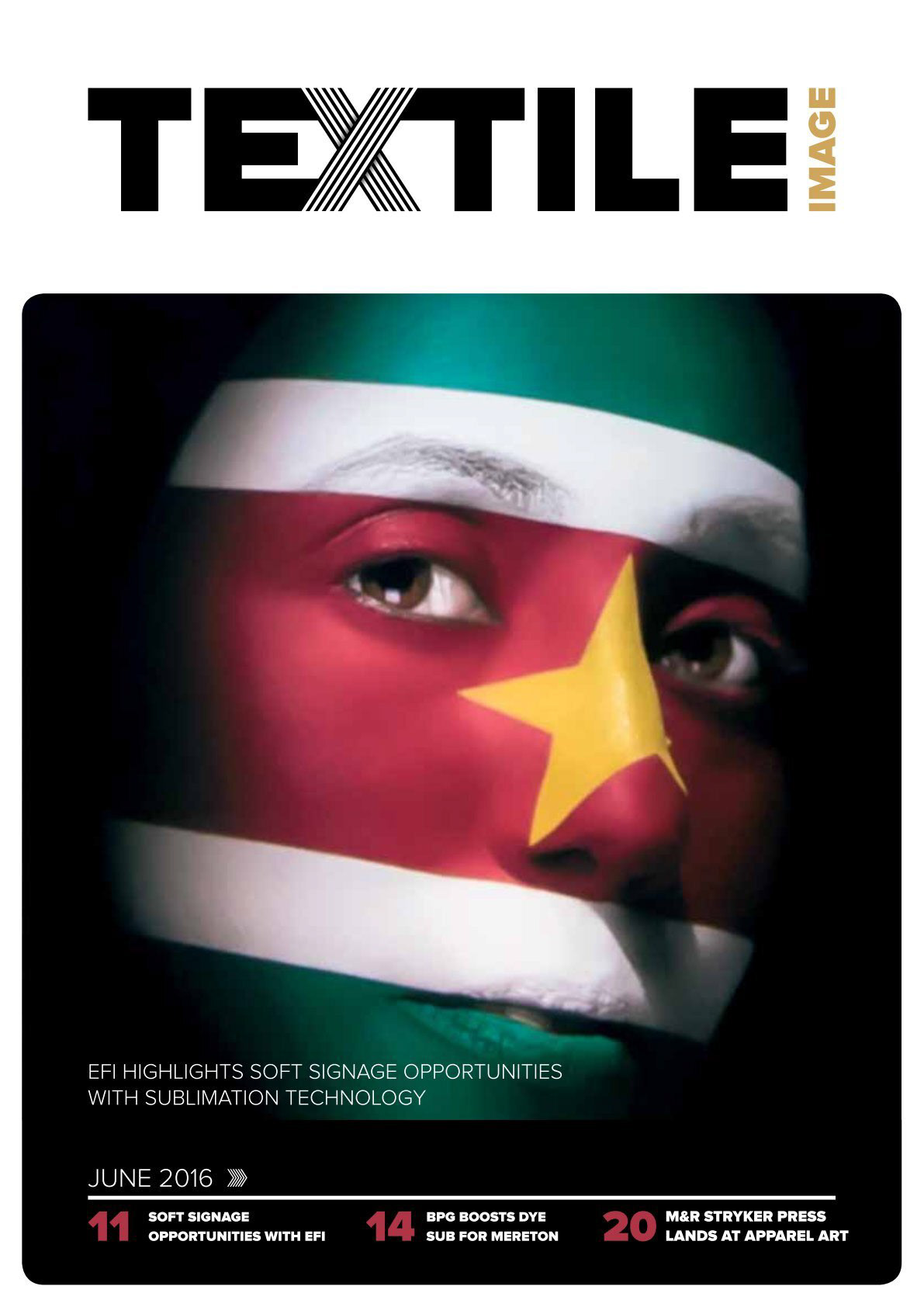
Textile Australia | Print Media
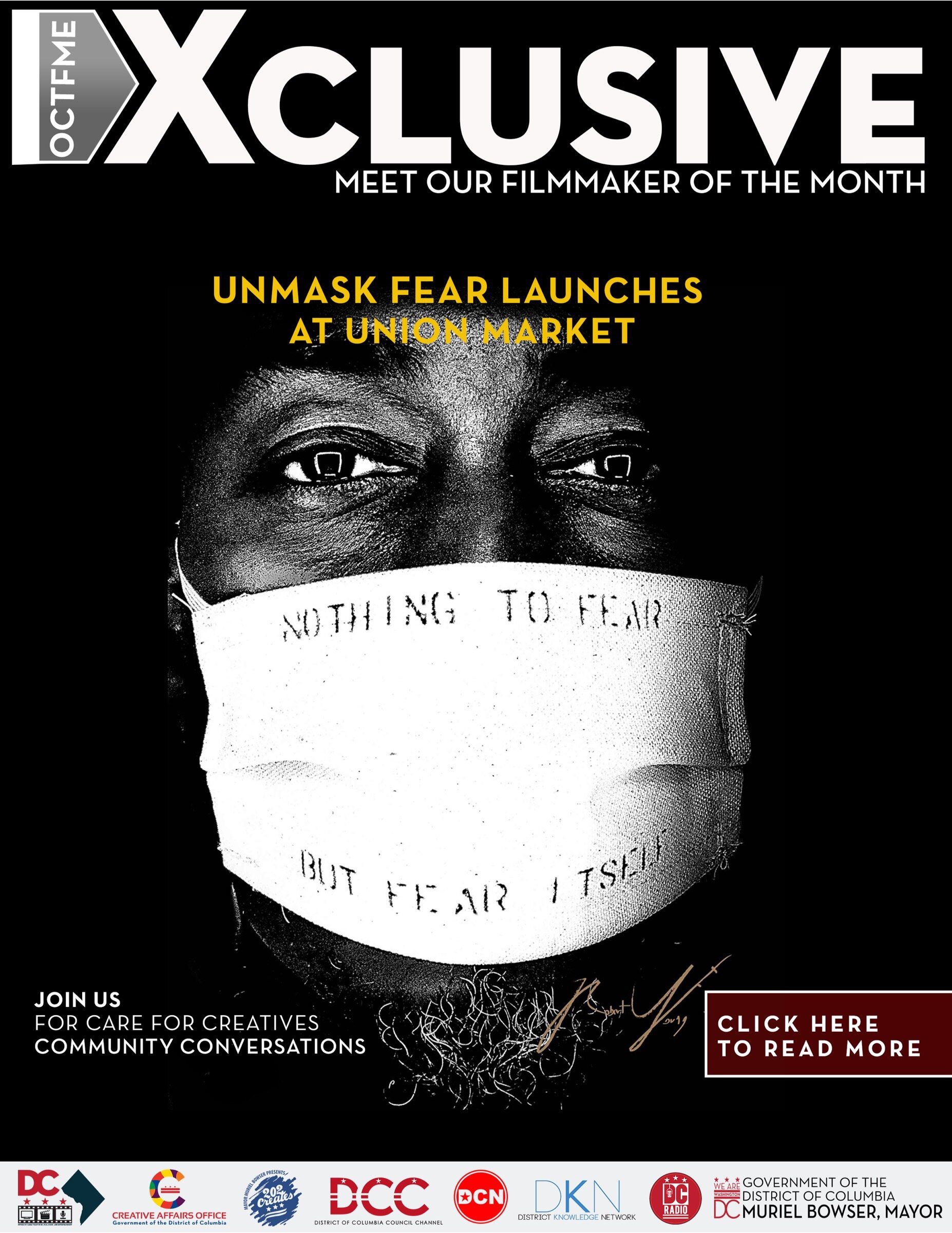
DC Mayor's Office of Television Film Media Entertainment | USA | Digital Media
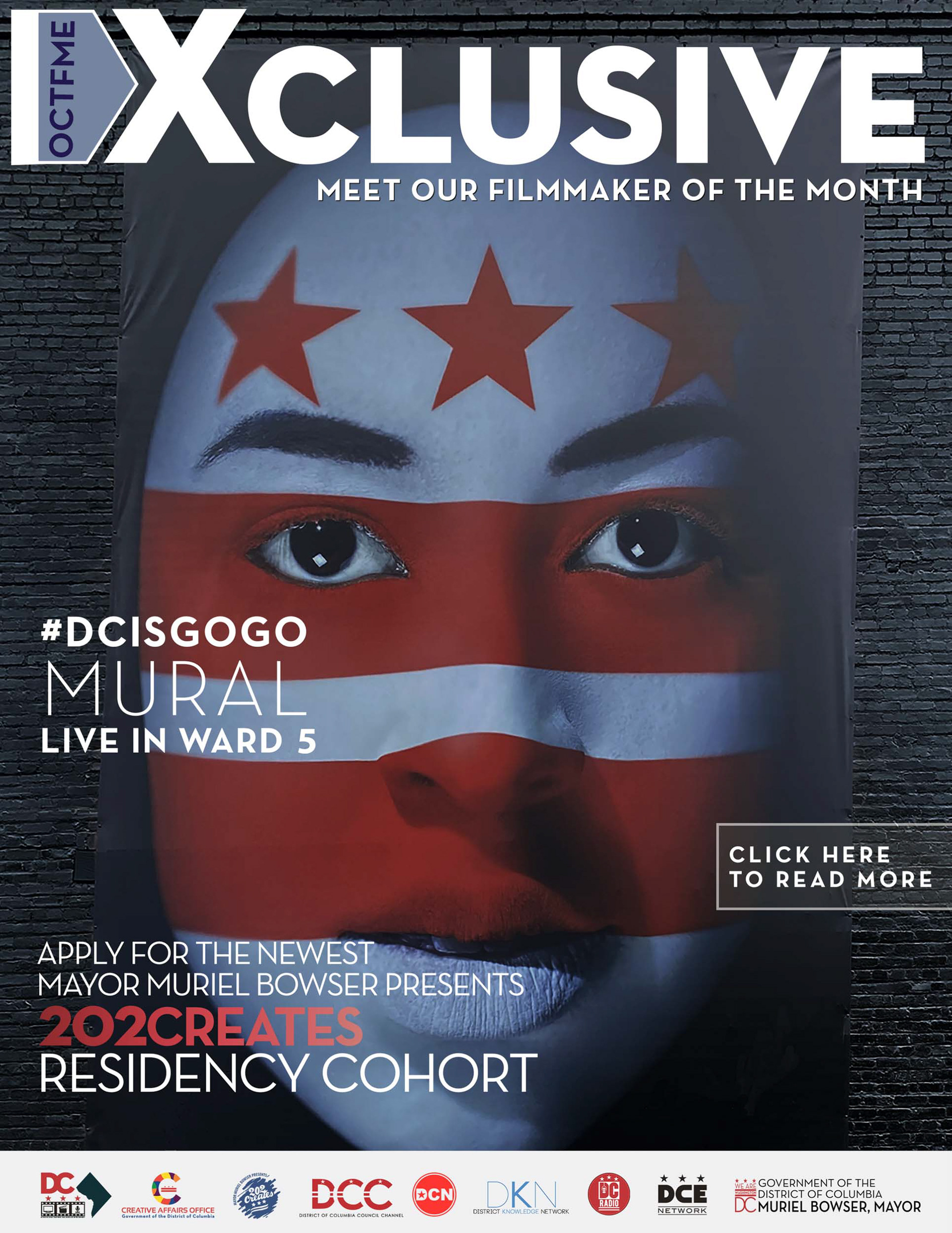
DC Mayor Office of Television Film Media Entertainment | USA | Digital Media
Some sponsors do not get much more than a sincere thank you. CIBC, the Canadian bank that is lead sponsor of the Toronto 2015 Pan American Games and its “Panamania” cultural festival is showing that sponsors can become the center of attention with a classy art exhibition that reinforces positive images. The exhibition is called “YOUNG World Faces of Pan Am.” The faces are in fact Young, the presentation style is new and intriguing, and the lead artist is actually named Young, Robert Young, to be exact. The July 7 preview was a big success and is generating a level of media attention that only the most successful sponsorship programs can achieve.
This very personal approach to showing the spirit and traditions of the forty-one nations participating in the PanAmerican Games presents a photo essay in a constellation of portraits. Each one is a headshot of a young woman from each of the forty-one nations, meticulously face-painted with a vibrant adaptation of the national flag of the country she is representing.
The relevance to a major international sporting event clicks over and over like a shutter in a photography studio. The face painting looks like the work of the most spirited national team fans who cheer their team on from the stands. The facial expressions reflect the range of emotions of passionate sports fans at live sporting events, from anticipation to amazement. The images are projected from illuminated lightboxes whose seven foot by four foot dimensions match the larger than life images of sports heroes. A matching digital art presentation enhances each portrait with a clip of each model and her aspirations for her country. And the presentation itself is in the shape of a hemisphere, engaging viewers to take a new look at the Western Hemisphere nations presenting themselves in the 2015 Pan American Games.
The presentation is a good match for the flagship exhibition space of its sponsor, CIBC, the brand of the Canadian Imperial Bank of Commerce, which also own the CIBC Wood Gundy investment house. It is a spacious entry to the tower that houses the bank’s headquarters in Toronto’s financial district. This “Center Court” is just a short walk from the Toronto 2015 Superstore and the center of Toronto 2015 daily victory celebrations and fireworks in Nathan Philips Square. This presents a model exhibition of what a sponsor can do to build off the platform of sports event fans to engage the arts community and the general public. The exhibition itself intrigues viewers to see each portrait again from different perspectives and share their impressions with other viewers. Many will likely return with friends on their way to other events in the area. This can give CIBC the image that upscale banks want. That is to be seen as an innovative institution that welcomes new ideas and new customers.
Serious business sponsors will also want to take a close look at the kind of team effort that makes this type of sponsorship an effective way to reach a large and influential audience. Robert Young, a Toronto area native who has extensive global experience with both professional model projects and photo essays, came up with the idea on his own and networked to present it to the Toronto 2015 organizers and potential sponsors at CIBC. Together, they decided to try and proceeded with engaging another network – expatriates from the other forty Pan American countries living in Toronto. They also recruited the talents of make-up artist Jocelyn Santos-Thompson, whose own family is from Chile. Santos-Thompson matched Young’s interpretation of each Pan American national flag to the individual complexion and beauty palette of forty different models. This artistic approach required sophisticated lighting to recreate the exact color shades used in the national flags, a new level of technical precision. Local technology also showed how these unique images can be presented to stand out. McRae Imaging crafted giant lightboxes seven feet tall by four feet wide to display high resolution fabric prints that make the portraits shimmer. The special effects strengthen the individual portraits and also make a stunning impression when viewers step back and see the entire gallery at one time.
Ambitious sponsors who want to do much more than hand out money to worthy organizations will want to take a close look at what this team effort has shown that it can do. Lead sponsor CIBC is earning praise for being willing to take a few risks and do something remarkably different. CIBC is also using its good customer relations and location to help achieve a critical mass of viewers. With exciting, new content like this program, word-of-mouth and social media can make that audience much larger. The pragmatic approach to presentation also makes it well suited to become a travelling exhibition after the exhibition closes on August 15. The standard-sized light-boxes are easy to ship in a single container and will be a welcome special exhibition at any premier sports museum.
Story By Max Donner
TORONTO (AP) — Robert Young is showing that Toronto is a fitting city to host the Pan Am Games, showcasing the diversity of the entire hemisphere along the shore of Lake Ontario.
The Toronto-born Young has been able to find women living in Toronto with roots in each of the 41 nations or territories participating in the games. He painted their faces in the colors of their native flags, photographed them and put their stunning images on tall panels arranged in a Stonehenge-like ring that’s the center of an exhibition in the city’s downtown.
“I’ve never seen anything like this,” said Carla Olivier, who works at a nearby hotel and stumbled across the exhibition on Friday. “I love it.” Olivier might be a typical Torontonian. She was born in Trinidad and Tobago in the Caribbean but has lived in Toronto for 30 years. Vivienne Bryan was a few steps away looking at the Jamaican display. She came to the city 25 years ago from Jamaica and said she was “so proud” to learn that Young is the son of Jamaican immigrants. “To be honest, I’m amazed when I see this,” she said. That summed up the reaction as a few hundred people cut across the circular display, posed for photos and milled around. Many congratulated Young for capturing Toronto’s diversity, which could only be matched by much larger cities like London or New York. “Toronto has the opportunity to showcase the world in one place,” said Young, who returned to his native city earlier this year after living away for a few decades. He said the commission by games organizers to present his signature series, “Young World Faces”, allowed him to learn new things about his city of birth.
Canada’s largest city will show off its diversity throughout the 17-day games, which end July 26. According to city hall data from 2011, approximately half of Toronto’s population was born outside Canada, and 45 percent of residents have a mother tongue other than English or French. One third of its immigrants have arrived in the city in the last 10 years, and more than 200 “distinct ethnic origins” were identified in one study.
Young said he found his subjects largely through word of mouth. Very few had worked as models, and all called Toronto home at the time when he shot the photos earlier this year. “Each time I chose someone I would ask them who else they knew,” Young explained. He said the most difficult to find was a representative of the South American country of Suriname, who was recommended by his Argentine subject. “I told her she had to come in — there is only one of you,” he said. Surprisingly, he said finding a representative from Canada was a challenge almost as tough as Suriname. “With Canada, I wanted to find someone who went back three or four generations.”
Young said he chose candidates whose faces could exemplify their nations, and focused his attention on the piercing eyes of every subject. “I would study the angles in a particular flag, whether there were stars, whether the colours were horizontal or vertical,” Young said. “I’d study the flag to see how it could be matched seamlessly with the person’s face.”
Young, who is one-quarter Chinese, said the project taught prompted his subjects to learn more about their families and their immigrant histories.”Some knew a lot,” he said. “Some used it as an opportunity to know more.” He said he plans to continue the project for the entire world. The scale will grow, but the intrigue will be the same.
“People are fascinated with color, and they are fascinated with where they are from,” Young said. “People are also fascinated looking into people’s eyes because most of the time they are scared to do it. Here’s an opportunity to do it and learn about the world at the same time.
Story By Stephen Wade | AP Photo/Julio Cortez

